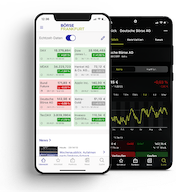Market sentiment: “Endlessly upwards?”

The DAX shines with gains, which is particularly encouraging for speculative investors.
Summary
Local investors are reacting to the continued rise in share prices with short positions. 7 percent of professionals have switched from the sidelines to the bear camp. Among private investors, 3 percent have switched from long to short. Joachim Goldberg sees this as an attempt to make a short-term profit. Money flows from abroad are probably responsible for the DAX records. Understandably, the investors we interviewed were hesitant to enter near the all-time highs.
The behavioral economist does not see any real pessimism behind the short exposures. His conclusion: these positions could already support demand on the downside between 23,450 and 23,500 points. In other words, a green light as long as the long-term capital inflows continue.
21 May 2025 FRANKFURT (Goldberg & Goldberg). It is now considered controversial, but there are still stock market players who adhere to the traditional “Sell in May” rule and sell their shares at this time every year. In 2025, this strategy is unlikely to have paid off so far. This is because the DAX has risen by 6.8% at times this month. Since our last sentiment survey alone, there have already been six consecutive gains - including two new all-time highs. However, it is unlikely that the interim setback of 1.1% could have actually enticed investors to buy more. In any case, experience shows that investors find it difficult to jump on the bandwagon shortly before reaching new highs and after a series of weekly price rises such as we are currently experiencing.
It is probably still mainly long-term oriented foreign sources that are interested in Euroland shares, including DAX stocks, regardless of the purchase price. Possibly because many international investors are currently uncomfortable with US exposure for a variety of reasons (not just macroeconomic). In the end, the DAX posted a weekly gain of 1.7 percent.
They wanted to do it again
Meanwhile, sentiment among the institutional investors we surveyed with a medium-term trading horizon has deteriorated again compared to the previous week. Our Börse Frankfurt Sentiment Index fell by 7 points to a new level of -7. This change is almost entirely due to a migration of previously neutral investors towards the bear camp, which has subsequently risen by 7 percentage points and is thus almost at the same level as two weeks ago. In other words, the bottom line is that a group of investors is once again looking to cash in on a setback.
A similar trend is emerging among private investors, as the Börse Frankfurt Sentiment Index in this panel has fallen by 6 points to a new level of +15. The bottom line is that there has been a movement in the order of 3% of all respondents from the bulls to the bears. Incidentally, the majority of this change is attributable to those investors we surveyed via social media, while the other panel participants only saw an increase in polarization between bulls and bears of 2 percentage points each.
Psychological motives prevail
On balance, the sentiment gap between private and institutional investors has hardly changed compared to the previous week. Whether the new pessimism evident among the latter today is actually due to a reassessment of the macroeconomic environment seems questionable, however. At least psychologically, it is easier to “short” the DAX at a high level than to have possibly bought at the highest price of the upward trend.
However, we are not assuming that today's pessimists fear that the DAX will crash, but that they have taken short positions in order to cover these exposures at a lower level. In this context, we can imagine that in the event of a setback, initial demand from these sources in the range between 23,450 and 23,500 points will support the DAX.
The bottom line is that the DAX situation has not deteriorated compared to the previous week, and if the long-term capital inflows - primarily from abroad - continue, it should only be a matter of time before the pessimists of today end up having to chase the DAX trend.
by Joachim Goldberg
21. May 2025, © Goldberg & Goldberg for boerse-frankfurt.de
Video commentary (in German)
Activate YouTube videos
Please enable functional cookies needed to view Youtube videos. This includes cookies that keep you logged in and the chat tool Userlike. You can revoke your consent at any time in the cookie settings.
► Enable functional cookies
Sentiment index of institutional investors

| Bullish | Bearish | Neutral | |
| Total | 34% | 41% | 25% |
| vs. last survey | +0% | +7% | -7% |
DAX (change compared to previous survey): 24,000 points (+400 points compared to the last survey)
Börse Frankfurt Sentiment Index institutional investors: -7 points (-7 points compared to the last survey)
Sentiment index of private investors

| Bullish | Bearish | Neutral | |
| Total | 48% | 33% | 19% |
| vs. last survey | -3% | +3% | +0% |
DAX (change compared to previous survey): 24,000 points (+400 points compared to the last survey)
Börse Frankfurt Sentiment Index private investors: +15 points (-6 points compared to the last survey)
About the Börse Frankfurt Sentiment Index
The Börse Frankfurt Sentiment Index moves between -100 (total pessimism) and +100 (total optimism), the transition from positive to negative values marks the neutral line.
More articles from this columnist
| Time | Title |
|---|






